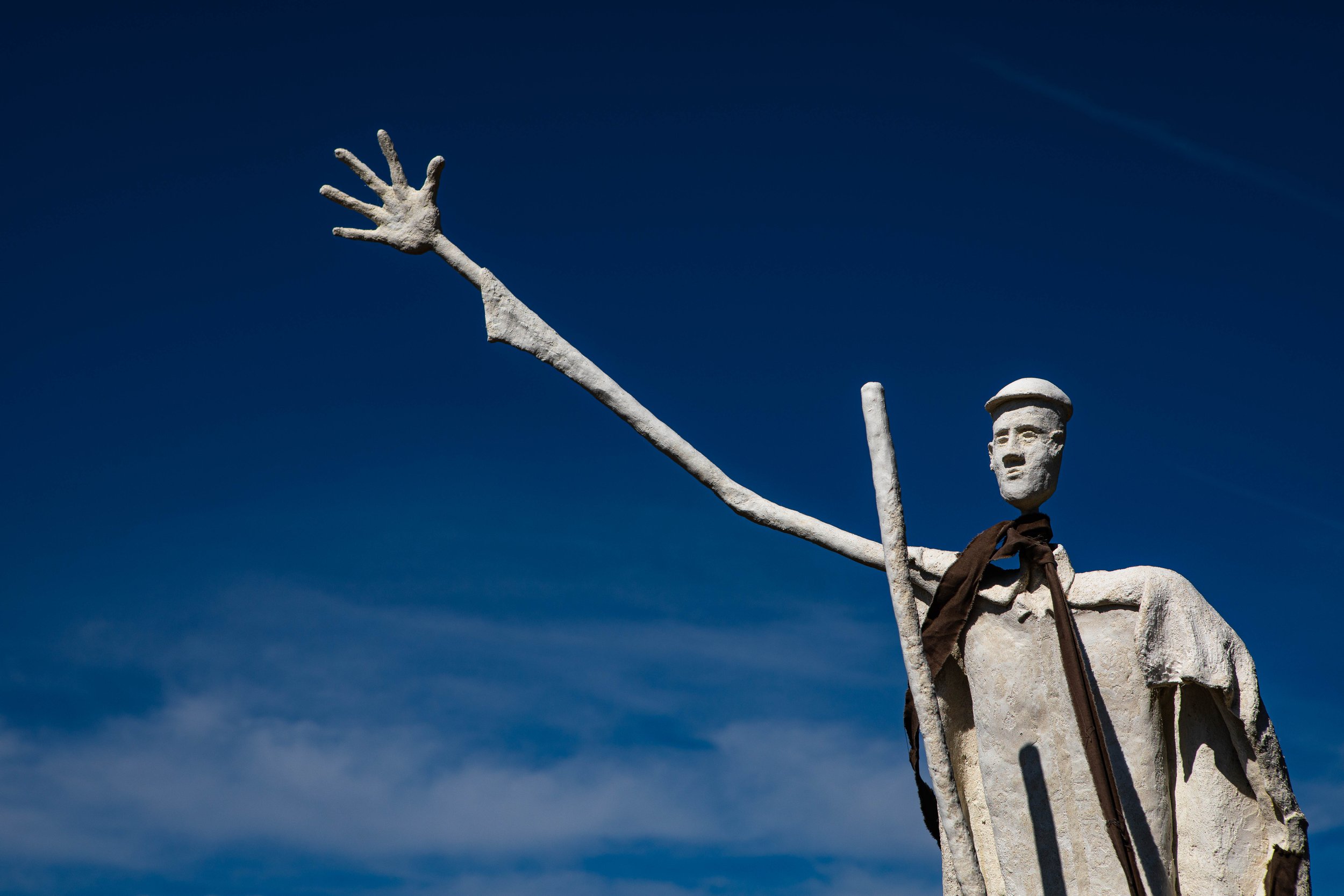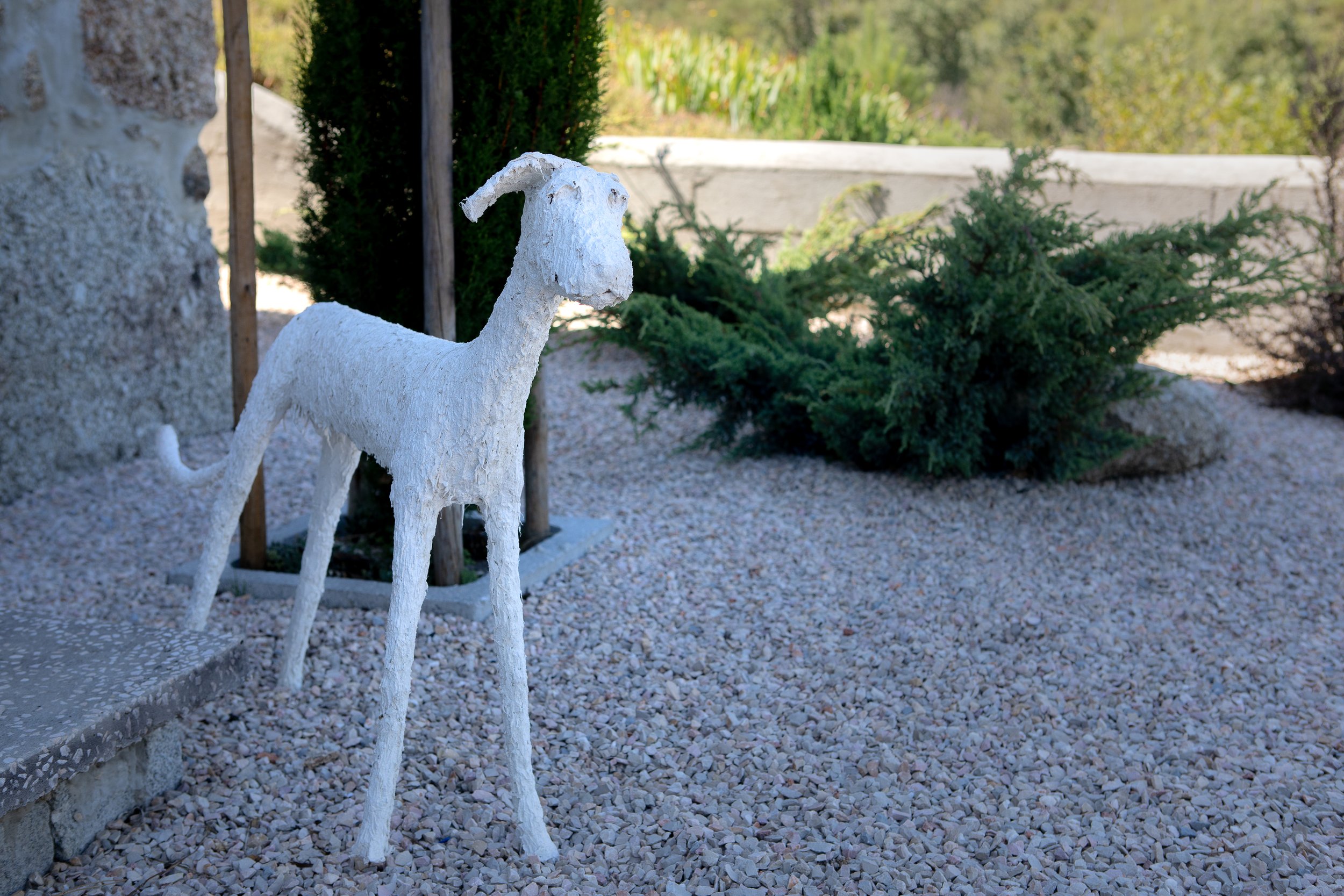
Gallery OUT-POST at Melo/Guarda has purchased and placed a sculpture In the public space, that is, In the valley near the village of Melo. The sculpture was made by the South African sculptor Dudley de Klerk (1958) and can be seen as a response to the current crisis situations due to the human-made global environmental problem. The consequence of this problem is that also here in Portugal during the summer period extremely high temperatures (+40°C), and prolonged drought causes large fires that plague beautiful irreplaceable landscapes.
The image shows a, lonely, shepherd waving with his dog to the In the distance village of Melo. It is not a friendly greeting, as it is customary to do by the shepherds remaining here in Portugal. (Pastores). It is an emotionally charged gesture, as if the shepherd is saying to the "inhabited world"; See me, I am in need of help. This is not a meaningless gesture. Due to the increasingly prolonged drought, it is almost impossible to pasture the sheep. The shepherd must make longer and longer trips to find food for his animals. Trips that sometimes last day and night. Because of the drought he can hardly give his sheep a drink. In addition, a virus is circulating that cause the sheep get sick and, sometimes, die.
The shepherd is in need. Relative to the global environmental problem, this is perhaps a minor detail. But it sharply shows the consequences of selfish human actions.
Gallery OUT-POST aims to give artists the opportunity to create a work of art inspired by the mountainous landscape of the Serra de Estrela during a one-month residency.
Dudley De Klerk’s work is characterized by the deconstruction of the human figure. Through an approach of abstraction De Klerk captures and accentuates the fragility of the human body through the elongation of shapes. The elongated totemic representation of the human figure lends an air of solitude to the thin figures. De Klerk has a tacit understanding of abstracted shapes and it is important to him to rather capture a feeling or moment or experience rather than achieving an accurate portrayal of the figure. He attempts to represent the human figure in a convincing illusion of space where the viewer can share his tangible sense for three-dimensional spatial expression.
Working predominantly from memory, he creates his sculptures through a process of sketches followed by scale models in clay or wax before creating the full scale sculptures. He uses clay, plaster or a pliable cementitious mix which he had developed himself. Before reaching the final product he would often go through an iteration of cutting back, rebuilding, and repeating the cycle until he is satisfied that the sculpture portrays the image he had in mind.
Dudley de Klerk was born on 25 October 1958 in Pretoria, South Africa. After finishing school he studied Civil Engineering and qualified as a structural engineer. He spent 38 years as a consulting engineer during which he found artistic expression in the design and construction of challenging projects, some of which he won awards for. Since his retirement in 2015 he has been spending more time sculpting and began creating the elongated sculptures that is now his signature work. In 2018 he immigrated to Portugal with his wife Linda, where they are still living.



